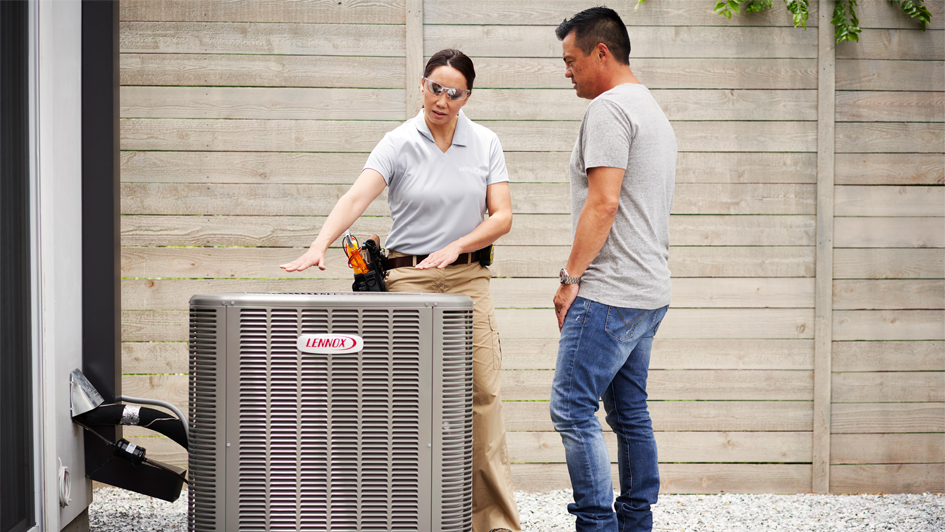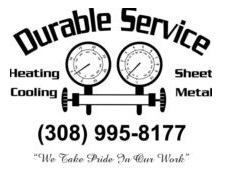
Finding the appropriate HVAC system size for your home is essential. It has a big impact on your home enjoyment and your energy bills. In this HVAC sizing guide, the experts at Durable Service will explain how to select the right size of heating and cooling system for your home, what factors they take into account and why selecting the ideal size HVAC is so important to your convenience.
How Does HVAC System Size Affect Your Home Comfort and Efficiency
Proper HVAC size differs for every home. Your HVAC system needs adequate heating and cooling capacity to make your entire home cozy. It shouldn't have to work extremely hard to keep up in extremely scorching or cold weather. However, an HVAC system that's too big is inefficient, costs more up front and can cause problems that make your home less enjoyable.
Key Factors Professionals Consider for HVAC Sizing in Holdrege, NE
To choose the correct HVAC system size for a home, the HVAC installation specialists at Durable Service conduct a Manual J load calculation to determine how many British Thermal Units (BTUs) are required to heat and cool and the home. A Manual J calculation evaluates multiple features of your home, such as:
- Home size: The total area of the home is arguably the most crucial factor in selecting the size of your HVAC system. How much space will your new HVAC system be required to heat and cool?
- Home insulation: A fully insulated home retains the indoor temperature more effectively, which can impact how much heating and cooling power you demand.
- Local Weather: The local climate in Holdrege, NE, has a major role in identifying the appropriate size HVAC. Homes in hotter climates may require a system with an increased cooling capacity, while cooler regions may need less.
- Number of windows: Windows can be a considerable source of energy loss. The number, dimensions, type of glass used, and whether they’re single paned or double paned can greatly influence heating and cooling requirements.
- Sun exposure: A home that gets a lot of sunlight will naturally be warmer than one that doesn't, which affects central air sizing. Home placement in relation to prevailing winds and number of nearby shade trees also influence the appropriate HVAC size.
Common HVAC Size Mistakes to Avoid
A common mistake homeowners make when choosing the size of home HVAC system is to rely solely on square footage. While the square footage of your home has a major impact on what size HVAC you need, other elements also influence how much heating and cooling capacity is required to keep your home comfortable.
Another typical mistake is not engaging a professional. It's essential to have an experienced HVAC technician conduct a Manual J calculation, which takes all the essential aspects of your home into consideration to find the right HVAC size.
Why Does HVAC System Size Matter?
An inadequately sized system can result in comfort problems and increase expenses. Here's a detailed view of the pitfalls of a wrong-sized HVAC:
Problems with HVAC systems that are too small:
- Less longevity and breakdowns: HVAC systems that are too small often run constantly to try to heat or cool a home, leading to more wear and tear. This can lead to breakdowns and even require premature HVAC replacement.
- An uncomfortable home: Small HVAC systems lack the necessary capacity to heat and cool your whole home, which can lead to hot, stuffy rooms or areas of your home that are far too cool.
- Increased energy bills: An underpowered HVAC system that runs continuously trying to keep up uses more energy, increasing your monthly power bills and costing you money. A properly sized and energy-efficient HVAC system operates more efficiently and helps to reduce your monthly bills.
Issues from oversized HVAC systems
- Wasted money: Larger HVAC systems typically have a higher purchase price, so buying more heating and cooling capacity than your home needs is a waste of money.
- Less service life and breakdowns: HVAC systems that are excessively large often start and stop frequently, referred to as short cycling. This can result in wear and tear on your machine, reducing its service life or requiring HVAC repair.
- Excessive indoor humidity: An HVAC system should balance indoor air moisture, but an oversized HVAC system might not run long enough to accomplish that task. This can result in indoor air quality issues, such as mold growth.
Get Help Replacing or Sizing Your Home HVAC System from Durable Service
Now that you have learned some of the aspects of your home that affect what HVAC system size is right for you, it's time to choose a new heating and cooling system. Durable Service is ready to help.
We’ll evaluate your home and provide you with a free, no-obligation estimate for HVAC installation. We’ll analyze your home to determine the most suitable HVAC system size for you, so you can have a comfortable home every day of the year.
Call 308-995-8177 today to schedule your free estimate for HVAC installation in Holdrege, NE.

